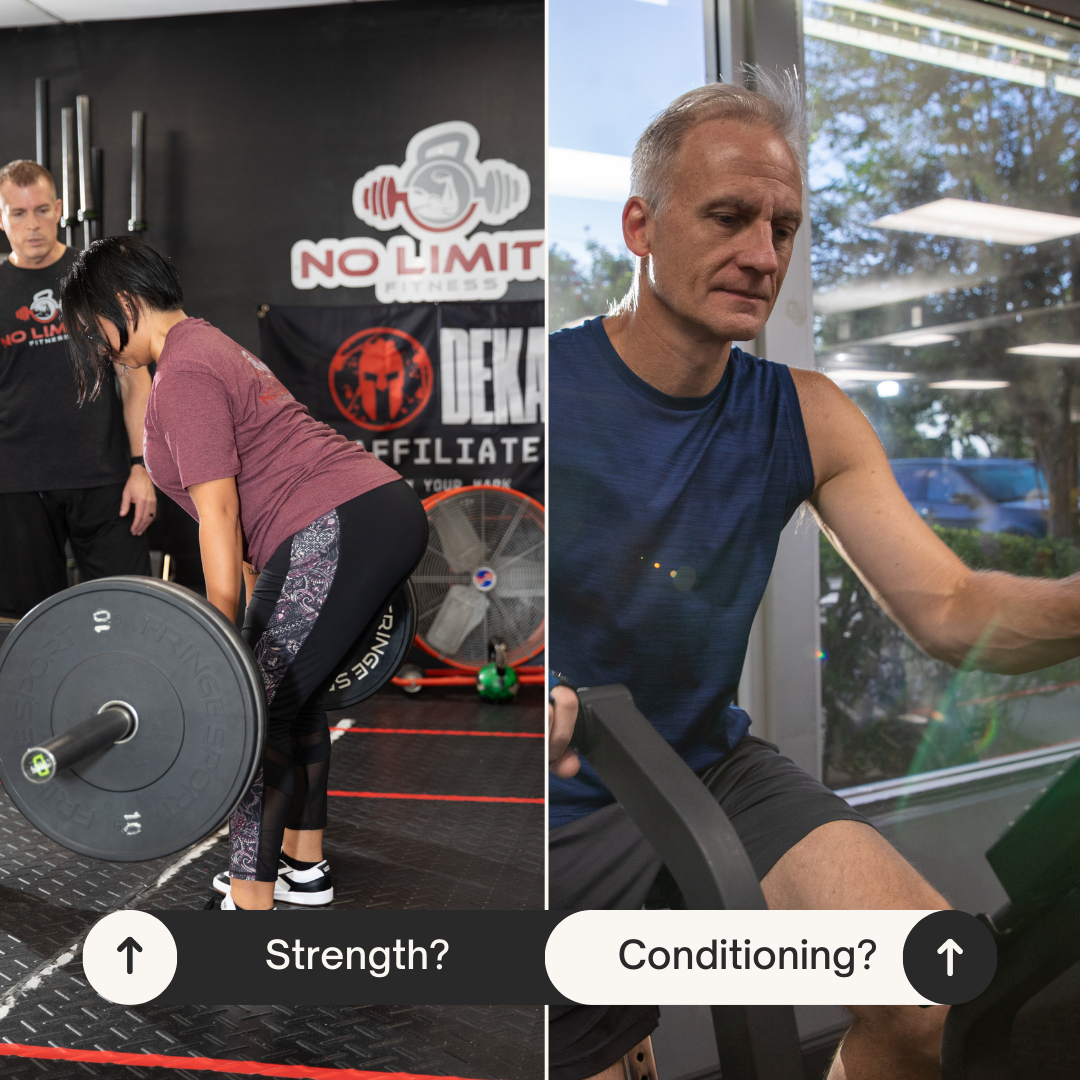Best Exercise For Weight Loss
Strength or Conditioning?

One of the more common questions we hear is whether someone should be doing strength training or conditioning (aka cardio).
Well...do you need oxygen OR water? Hopefully, you choose both.
Strength training allows you get stronger by developing lean muscle tissue, improve your bone health, enhance your metabolism and reduce your risk of injury.
Conditioning improves your cardiovascular health, your endurance, your sleep and it helps you live longer. I like to say that strength training will improve the quality of your life and conditioning will extend your life.
The next logical question is how much of each should you be doing?
The answer to this question may change depending on your individual training goals.
If you’re training for a half-marathon, you’ll probably want to prioritize your conditioning.
If you’re entering a powerlifting competition, clearly your focus should be on strength training.
Most people we encounter simply want to improve their body composition, have more energy and feel better overall.
If this is you, the first thing you’ll want to decide is how much time you’re willing to commit for your training each week.
Pro Tip: Start out small so you can build both confidence and momentum.
When you’re just getting started, you’ll want to commit to an amount of time you can workout...even if everything is going wrong.
If you do MORE than this amount of time, it’s a bonus.
But even when your car breaks down and you have a project deadline hanging over you, you will still meet this commitment.
If you haven’t worked out in 5 years, trying to work out 5 days a week is the best way to start another 5-year streak of inactivity.
We recommend starting with Two or Three 30-minute sessions each week. As you gain traction, you can increase either the number of sessions (to 3 or 4 sessions) or the length of your workouts (to 45 or 60 minutes).
Once you’ve decided on the frequency and duration of your workout schedule, you can then plan out your strength training and conditioning.
When it comes to your conditioning, you’ll want to follow the 80/20 rule with 80% of your work at Lower Intensities and 20% of your work at Higher Intensities.
If you’re doing 2 sessions per week, one strength training session and one conditioning session is a great place to start.
If you’re doing 3 sessions per week, we typically recommend two strength training sessions and one conditioning session.
If you prefer conditioning over strength training, you could also do two conditioning sessions and one strength training session.
The exact dose isn’t as important as staying consistent and including both strength training and conditioning to create a well-balanced training program.
About No Limits
No Limits Fitness provides step-by-step programs to help busy adults get the body they’ve always wanted, without restrictive diets or time-consuming workouts, so they can lead more fulfilling lives. Life is a much better experience in a strong, healthy body!
Recent Posts



Luci
Doug
Tasha
No Limits Fitness helps busy professionals lose weight, get stronger and have more energy so they can lead the lives of their dreams...even if they've tried before and failed.
SERVICES
CONTACT INFORMATION
All Rights Reserved | No Limits Fitness | Privacy Policy
